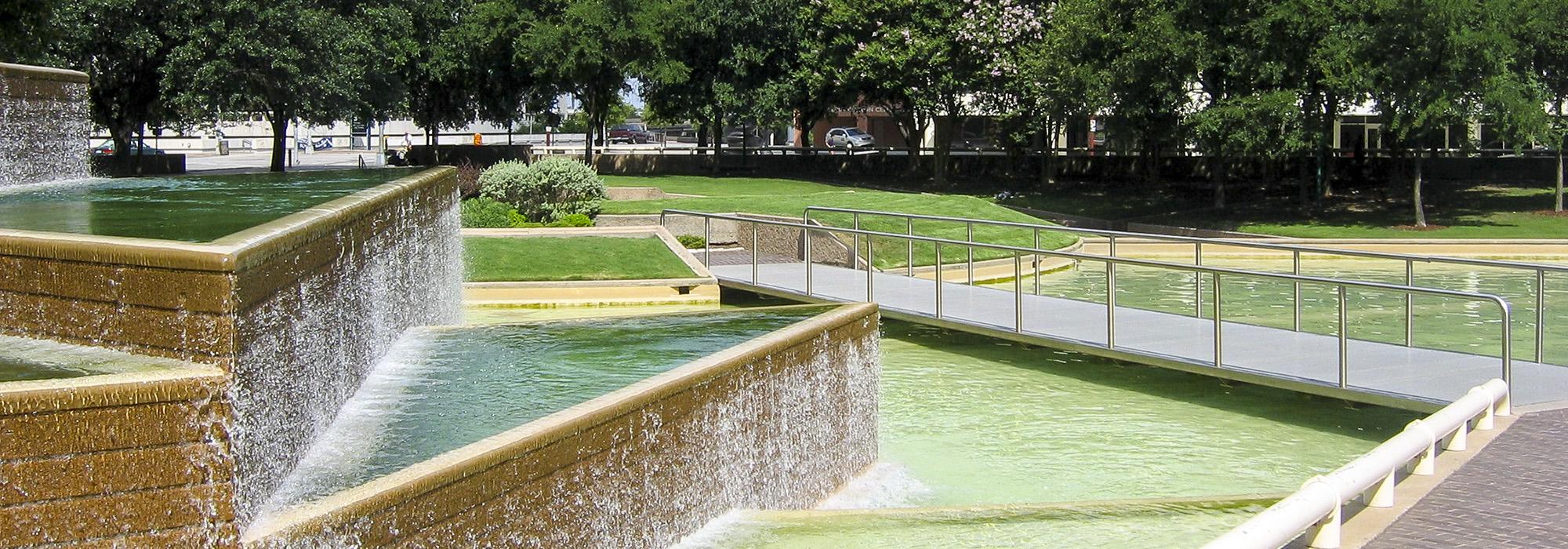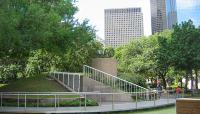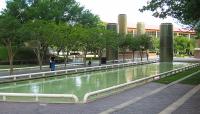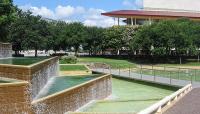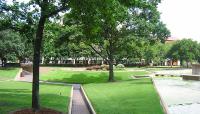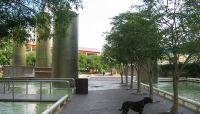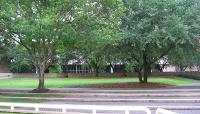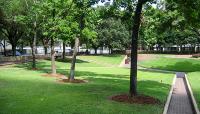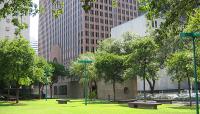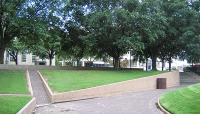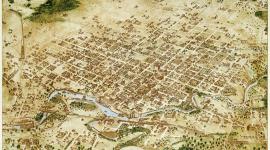Landscape Information
Situated atop a subterranean parking garage, this downtown park was designed in 1976 as part of the U.S. Bicentennial and dedicated three years later to commemorate the Apollo 11 mission to the moon in 1969. Created by architect Charles Tapley, whose design abstracted features of the lunar landscape, the park is composed of distinct geometric forms and dramatic topographic changes. Buffered from its surroundings by rows of mature oak, maple, and crape myrtle, the two-block site (formerly parking lots) is flanked by City Hall, the federal courthouse, and the Hobby Center for the Performing Arts. The park is bisected by a through-street, while a segment of Houston’s underground pedestrian tunnel system lies twenty feet below the surface.
Throughout the park, producing alternating sequences of openness and compression, wide brick walkways are contrasted with narrow walks bounded by concrete retaining walls that are cut into fields of neatly manicured lawn. Two circular grassy mounds—one featuring a deeply recessed pathway spiraling around a planter and the other providing access to the parking garage—provide topographic relief. At the center of the park, the massive Wortham Fountain comprises 32 levels of pools and cascades, with bridges crossing it at two points. Stainless steel cylindrical towers located in the fountain disguise exhaust and intake tubes for the parking garage below. At various locations in the park, public art installations commemorate the Apollo mission; in 1987 and 2003, memorials to astronauts who died in the Challenger and Columbia Space Shuttles, respectively, were dedicated.



